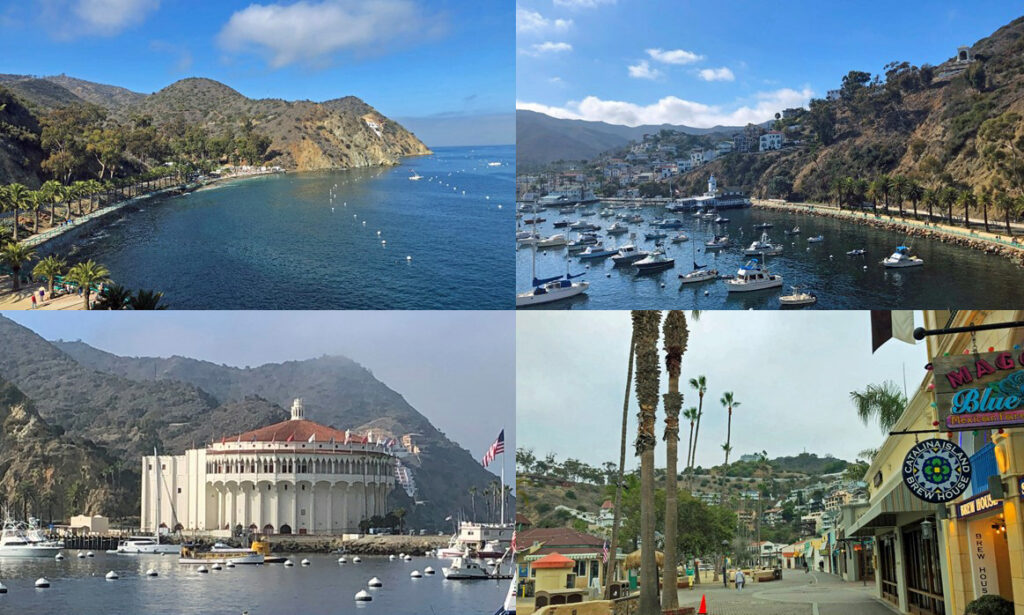With winter upon us, I am suspending my visits to Indiana landmarks in favor of warmer destinations.
About 10,000 years ago, Native Americans discovered a 22-mile-long island 29 miles south-southwest of present-day Long Beach, California. A Spanish explorer stumbled onto the rugged island on the eve of Saint Catherine’s 1602 feast day and named it “Santa Catalina.” In 1919, chewing gum magnate William Wrigley, Jr. purchased controlling interest in the company that owned 99 percent of what is usually simply “Catalina.” Using Wrigley Field’s architect, he built a summerhouse on a hilltop overlooking Avalon, the island’s only incorporated city, and began bringing his Chicago Cubs in for spring training. To give the island a European flavor, Wrigley and his wife installed Westminster chimes on a hill above Avalon Harbor. On May 29, 1929, Wrigley opened the 12-story-tall art-deco style Catalina Island Casino, its 20,000-square-foot rooftop ballroom still the largest circular room in the world without interior support. Mainlanders flocked to the Casino (which has never had gambling) to hear the Big Bands and watch movies in its theater. Hollywood celebrities came to Catalina because of its relaxed atmosphere, some joining the still-exclusive Catalina Yacht Club. U.S. presidents joined the island’s famous Tuna Club. Catalina was the location of a number of movies, including “Mutiny on the Bounty,” which is responsible for its palm trees. Descendants of bison imported for “The Vanishing American,” a silent Western, are now an attraction.
Catalina’s glamorous history and pleasant ambiance attract visitors from around the world, most coming by ferry. Others arrive at the Airport in the Sky, built in the 1940s atop a hill. The many attractions include a long zip line, a glass bottom boat and the candy store where 17-year-old newlywed Norman Jean Dougherty (Marilyn Monroe) worked as a taffy puller. The Wrigley summerhouse is now a hotel.
